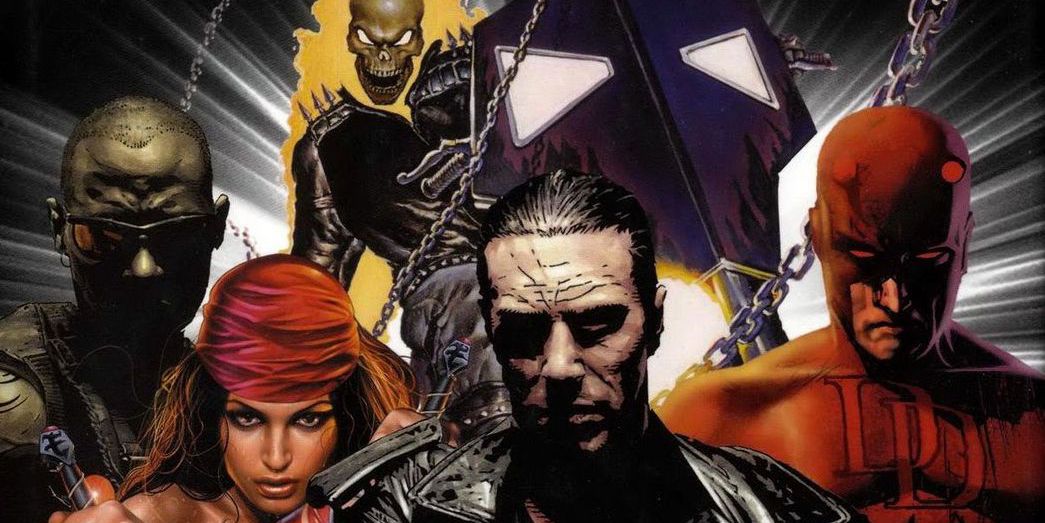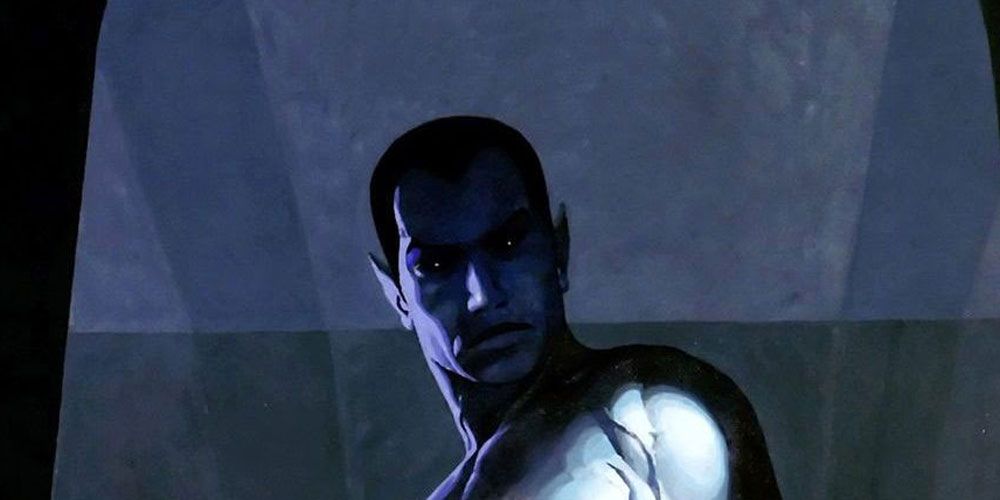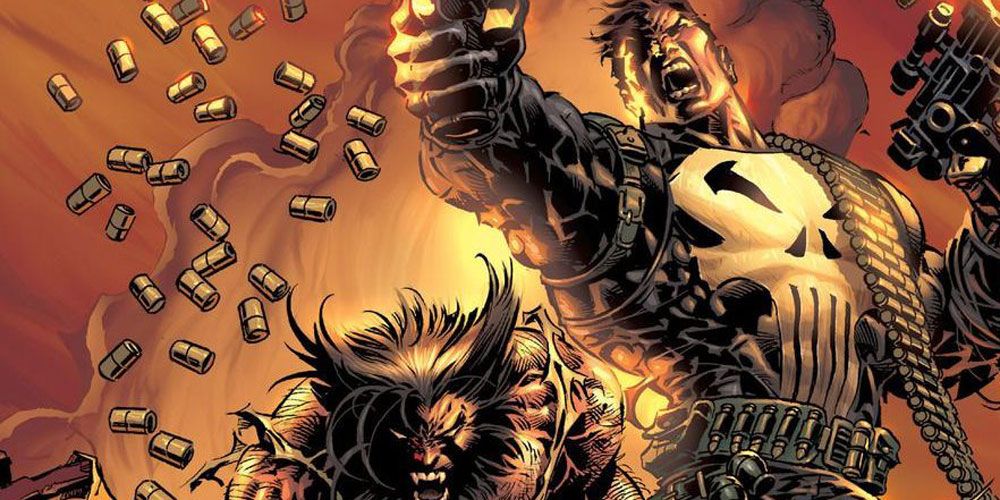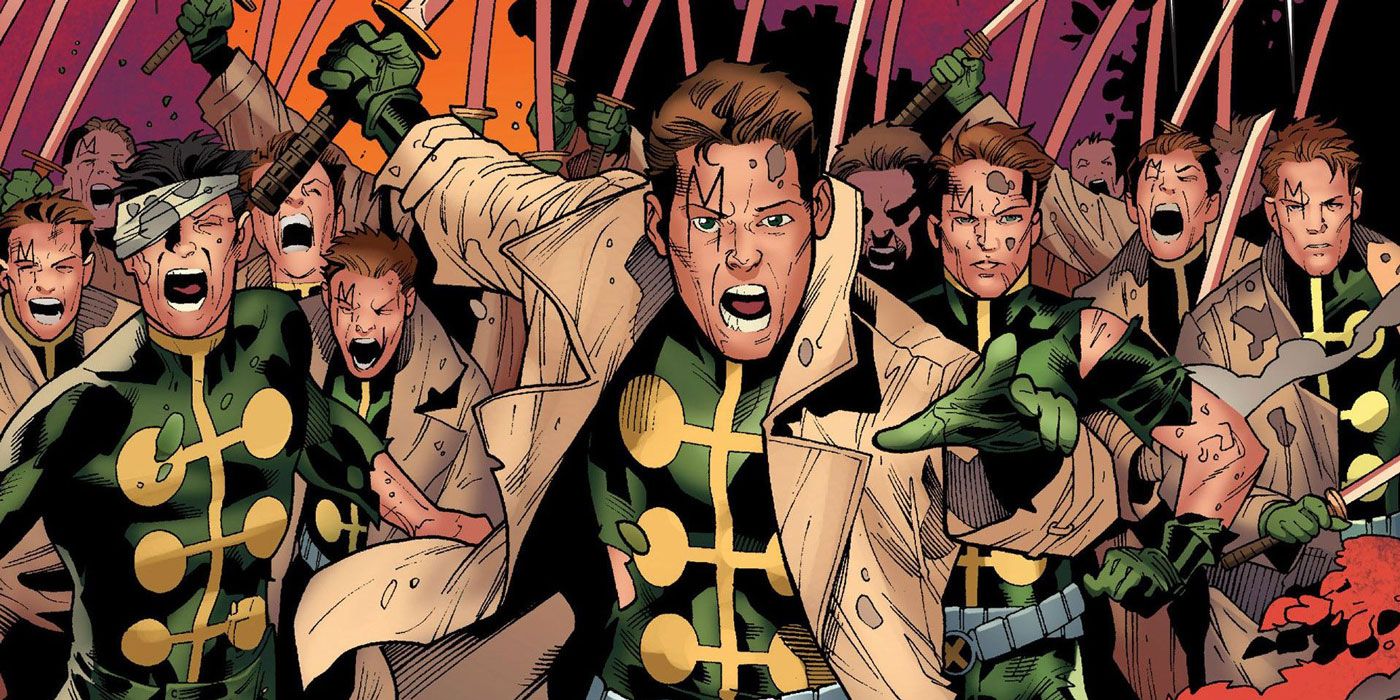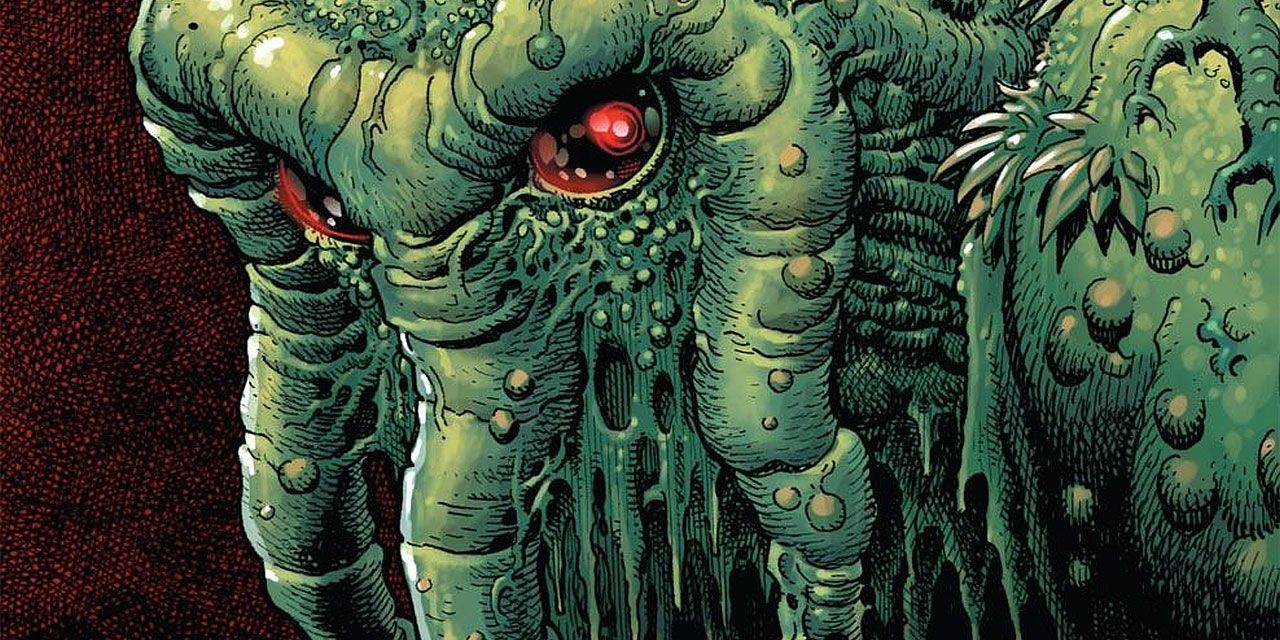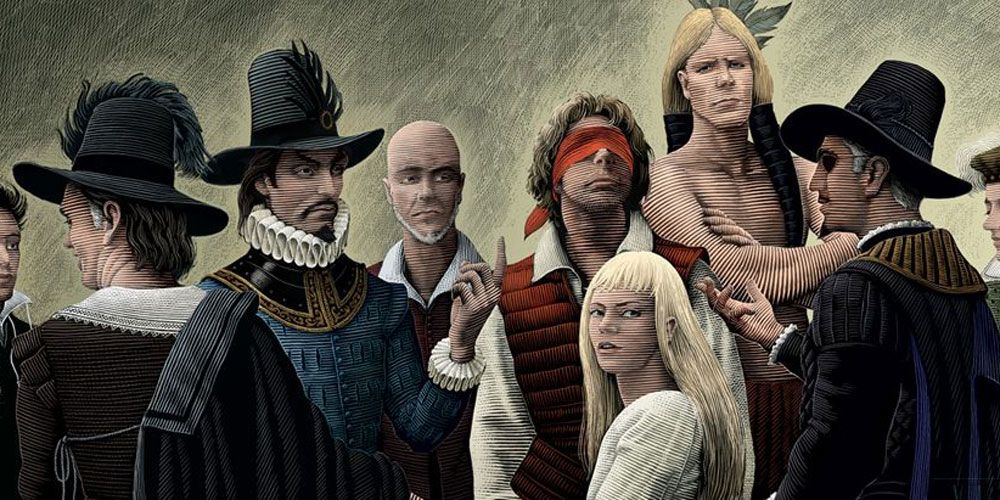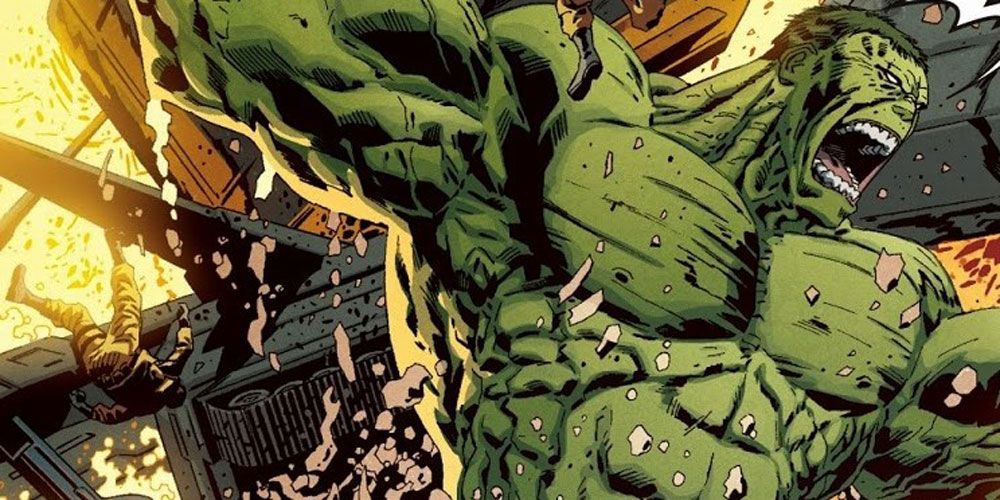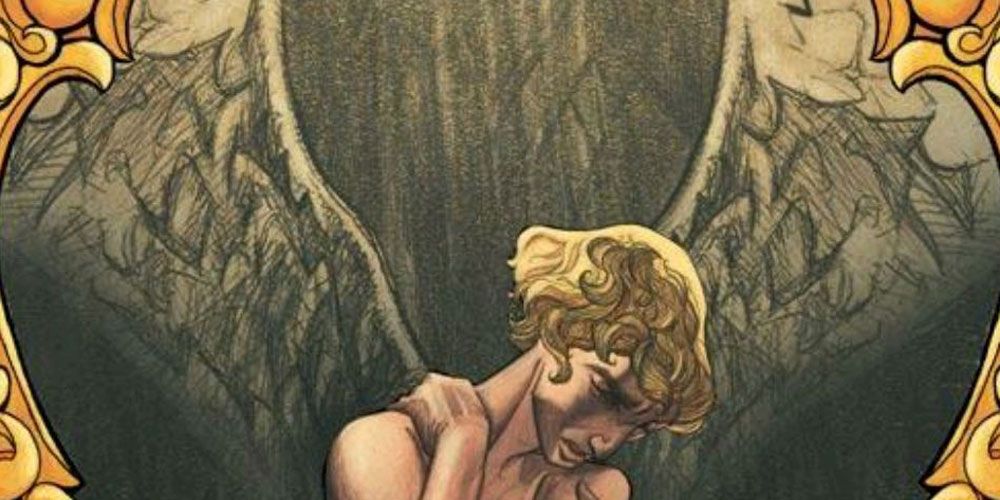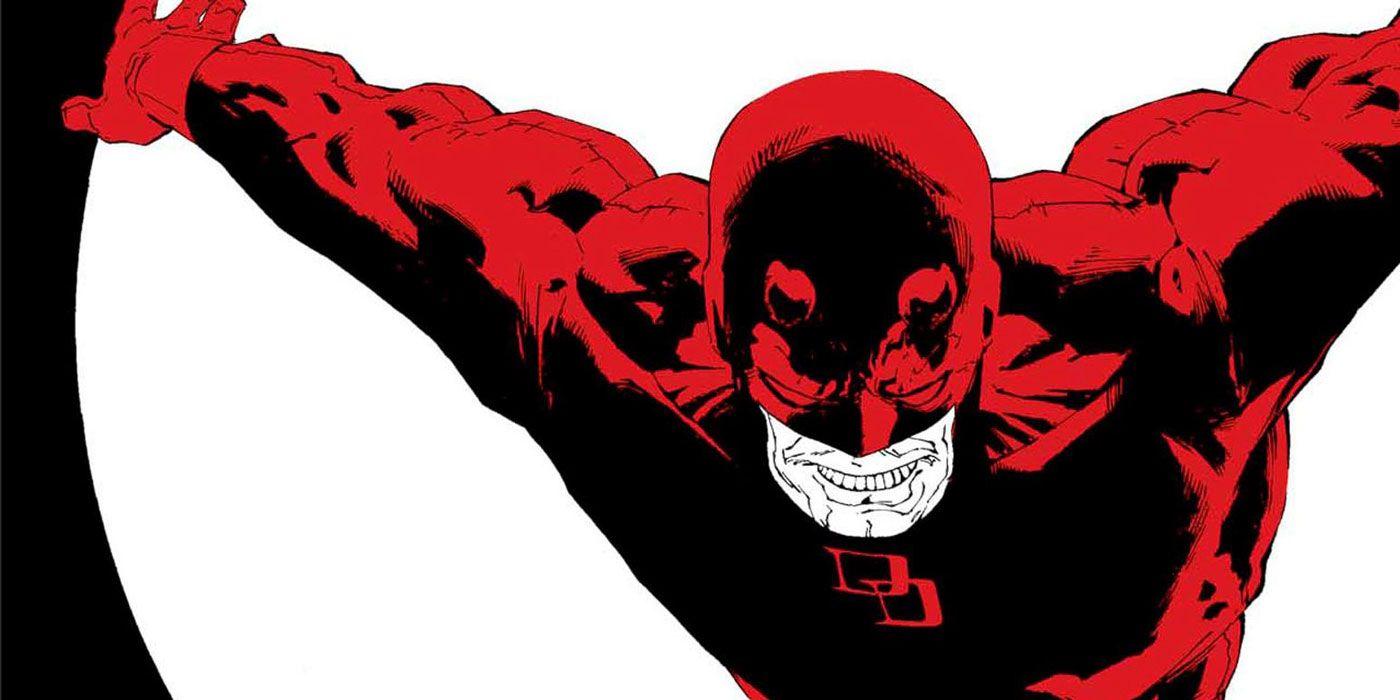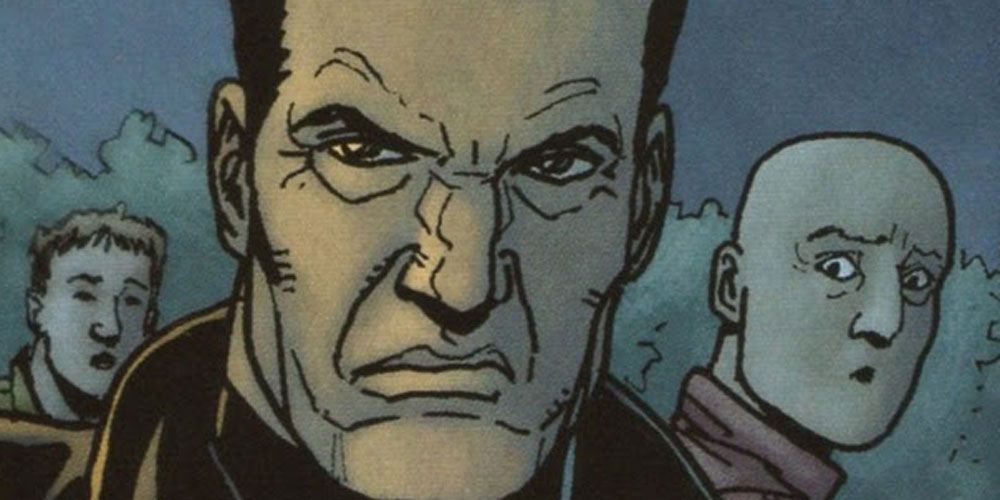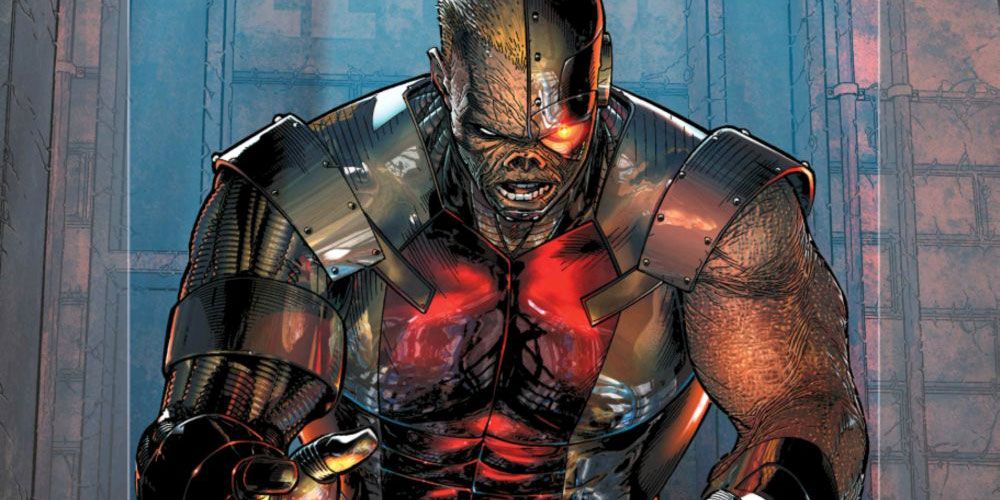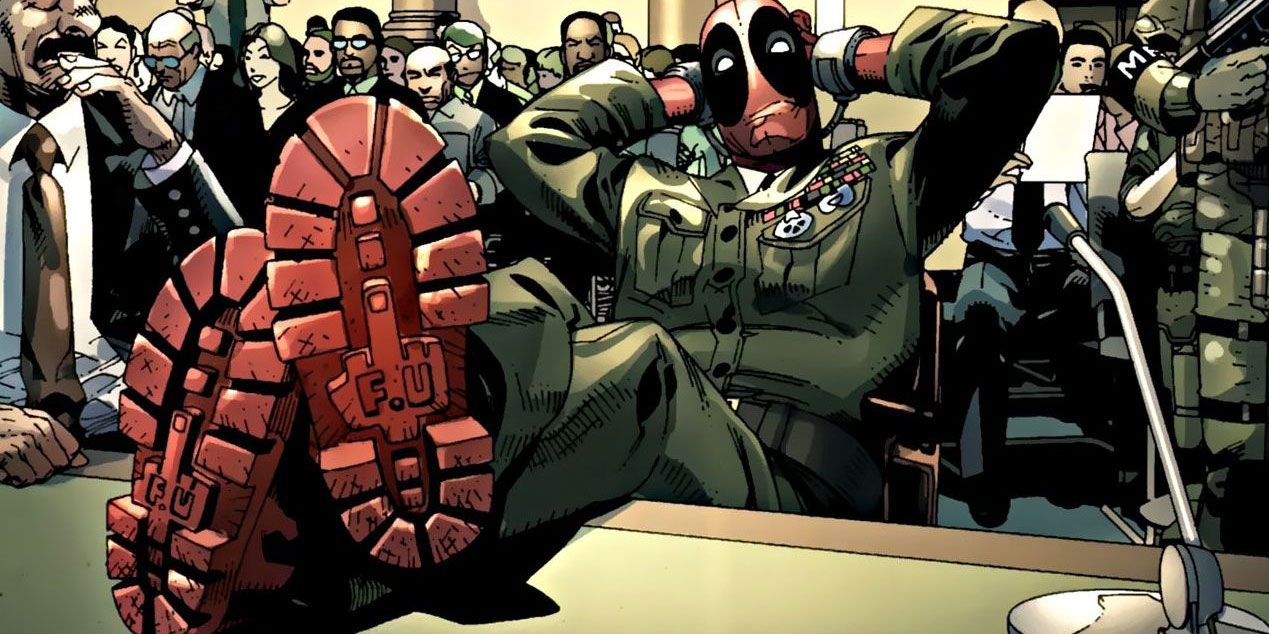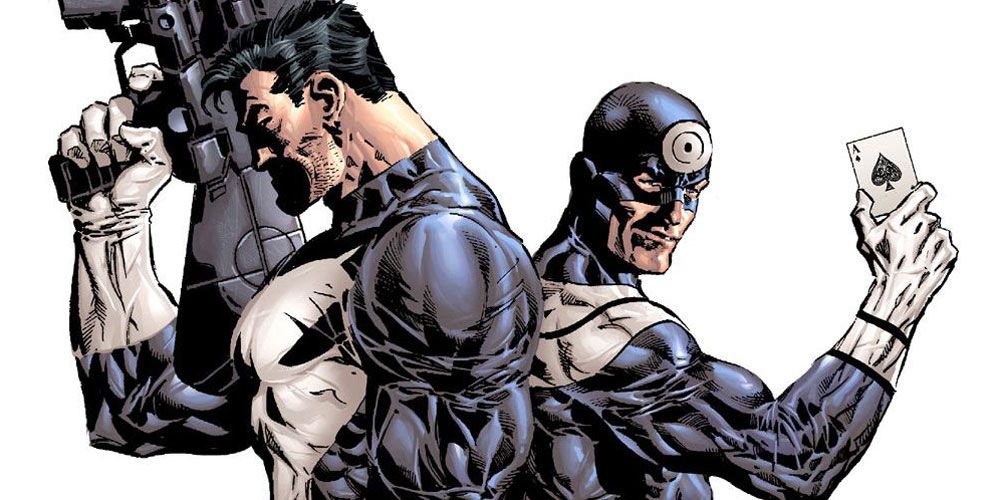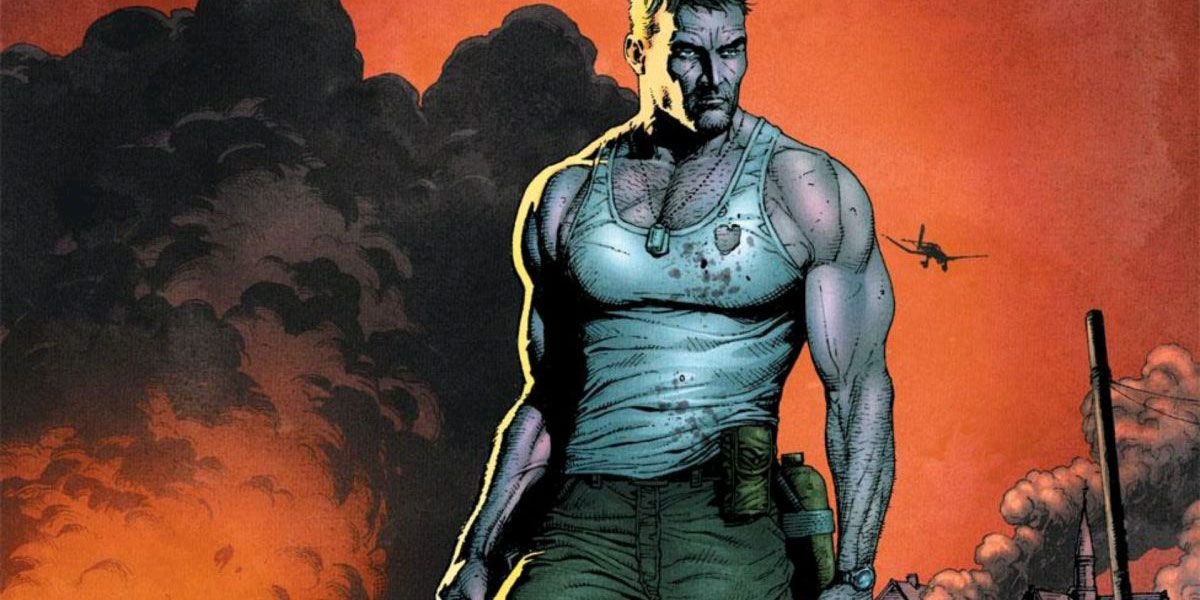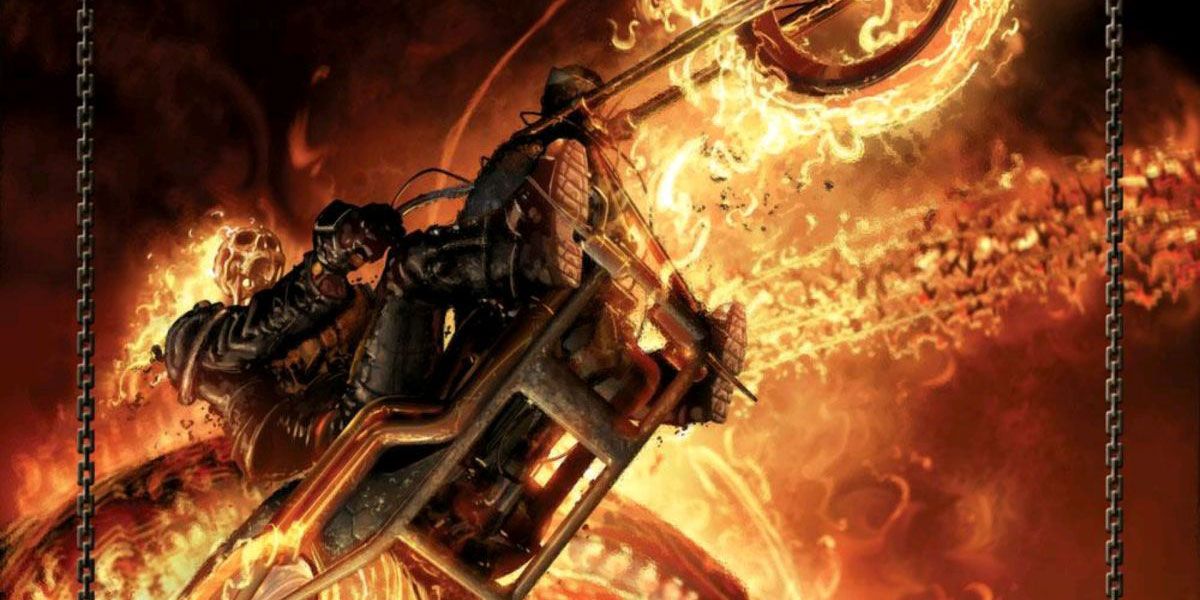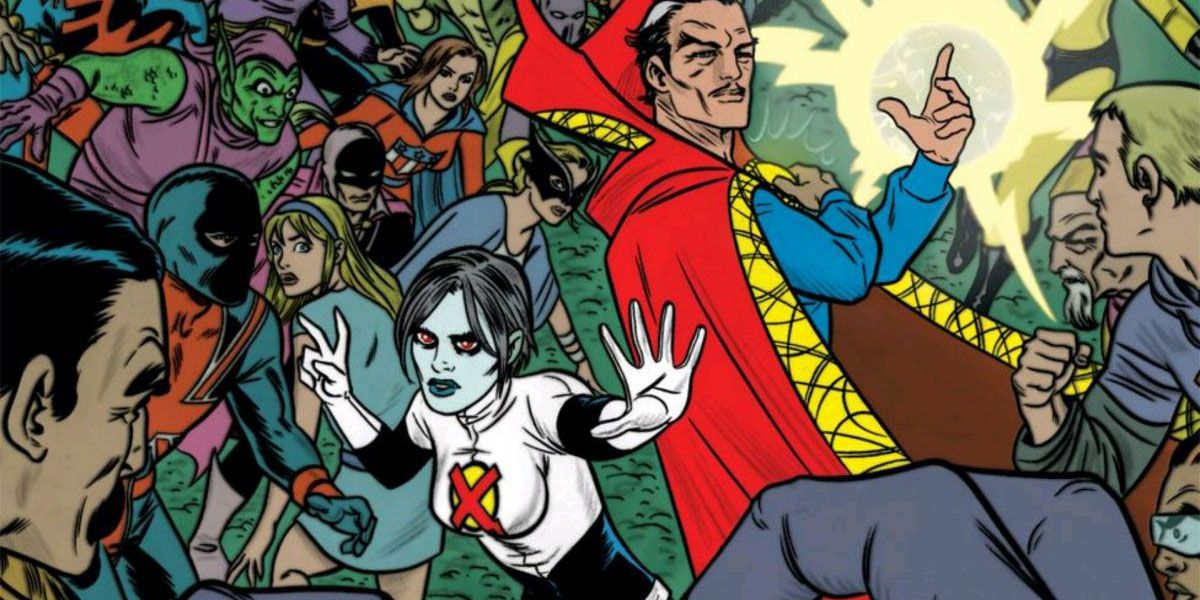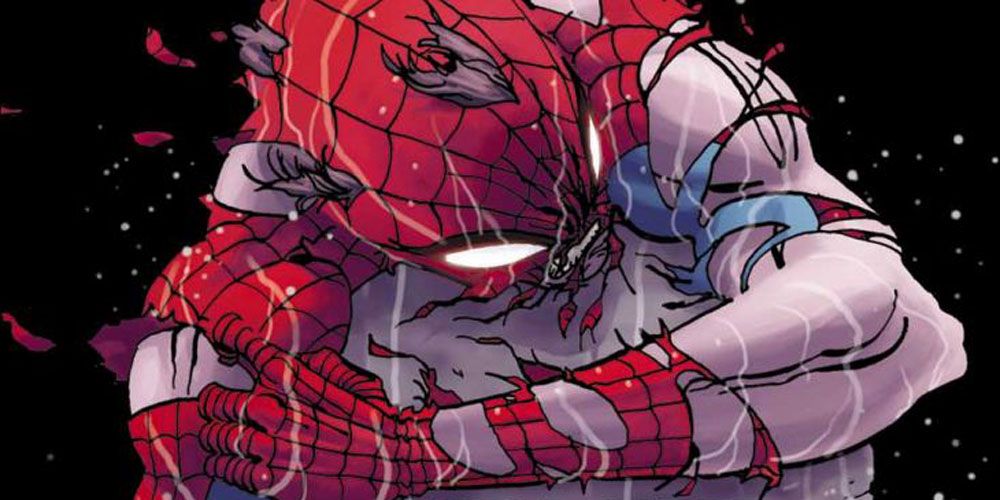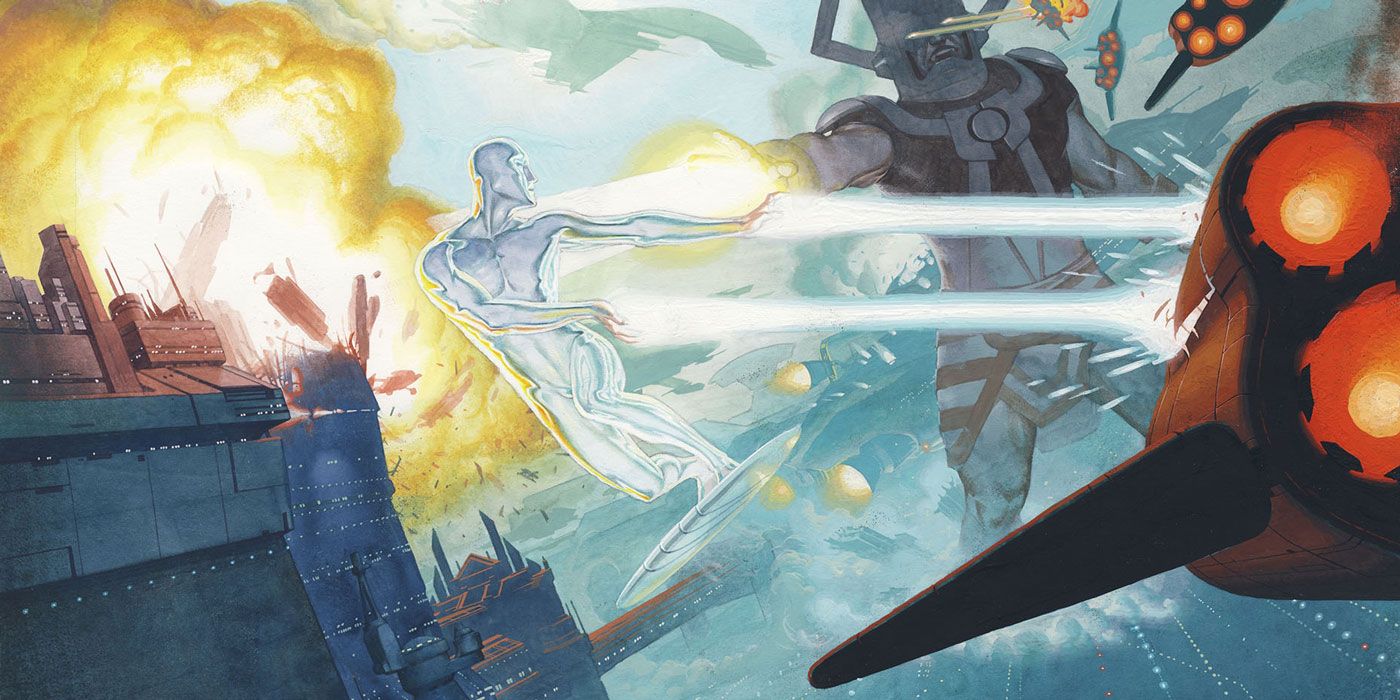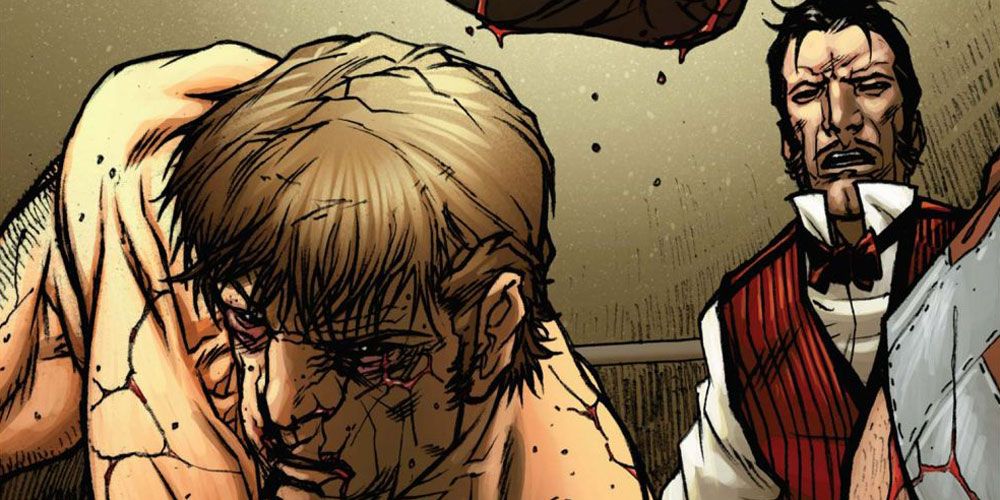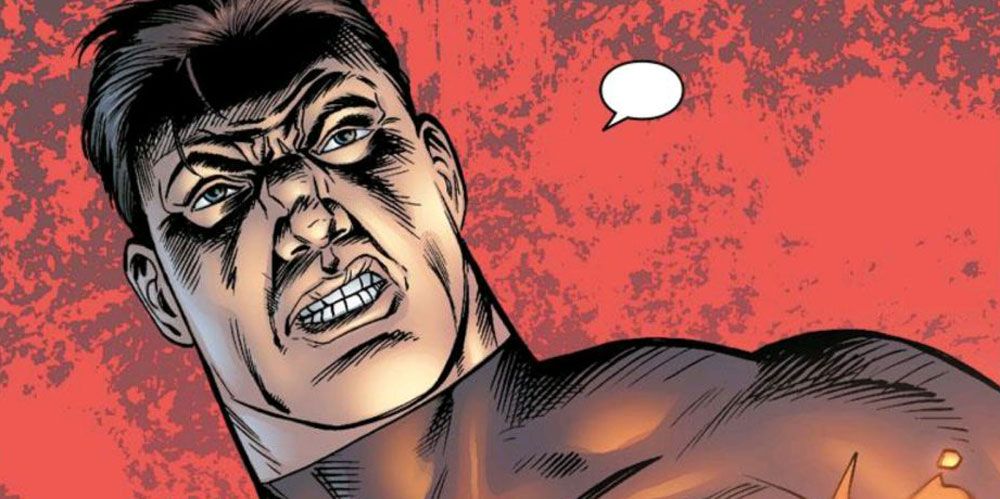The year was 1998. Titanic had won no fewer than 37 Academy Awards, the Y2K virus was busy getting ready to hurl us back into the Stone Age, and crab cake fever swept the nation. Amidst all of this, a funnybook publisher of some repute, Marvel Comics, was losing a lot of money. That’s right, kids, the very same company that has grossed several ka-jillion dollars with its film franchise was at its lowest point 20 years ago. The comic book speculation boom, which brought the world some of the finest and most well-remembered hologram covers in history, had finally busted. Comic book publishers across the country began shutting down like Cyborg in Amish country, and Marvel, bloodied but unbowed, made one final hail-mary: Marvel Knights.
Joe Quesada and Jimmy Palmiotti, two seasoned comics professionals by this time, were doing good things with their indie publishing line, Event Comics. Marvel tasked the two to start a new imprint for them, one that would return to the publisher some of the relevance it had enjoyed in the Silver and Bronze Ages. Quesada and Palmiotti would assign some of Marvel’s secondary heroes — Daredevil, Moon Knight, Punisher — to some of the edgier up-and-comers in the industry like Garth Ennis, Brian Michael Bendis, and David Mack, just to name a few. They were so successful with these darker, grittier books that Quesada became Marvel’s editor-in-chief as the new millennium dawned. Two decades on, and Marvel still seems to be doing okay for itself. Let us now look back at some of the titles that set Marvel Knights apart and helped keep the publisher afloat in one of the darkest times since Wertham.
20 SUB-MARINER: THE DEPTHS
Nobody really seems to take the king of Atlantis seriously anymore, especially considering his rival over at the Distinguished Competition is hogging all the headlines lately. Though a lot of folks seem to have missed this one, this 2008 book is a very fun and rather chilling re-telling of the myth of Namor and Atlantis.
Centered on an explorer looking to debunk the myth of Atlantis, this story by the great Peter Milligan is an extremely tense tale of horror, and the artwork of Esad Ribić creates a suffocating atmosphere wherein readers can feel their ears pop. Most Marvel Knights books were meant to stand alone within regular continuity; The Depths is an exception, more of a What If?, but the nonetheless exciting for it.
19 WOLVERINE/PUNISHER
If it’s dark and gritty action from Marvel you want, you can always expect a double helping of stark vigilantism from these two fellows. Wolverine and Punisher have appeared alongside each other many times since Punisher War Journal #6, and this mini does not disappoint in that regard.
Again penned by Peter Milligan, who made his splash in the mature readers area of the comics industry over at DC’s Vertigo line in the early ‘90s, this series introduces the strange villain of Napoleon, né Oswald Zinn, who approaches armed robbery like a war general. He’s a fun, twisted character to play off of Logan and especially Frank, who is particularly Punisher-y in this series, which is more than worth the read.
18 MADROX
Writing machine Peter David has always seemed to have an affection for mutant Jamie Madrox, also known as the Multiple Man, since his first run on X-Factor back in the ‘90s. Given license to run with the character in his own direction, David recast Madrox as a pulp detective, cynical and hilarious, in the tradition of James Crumley and The Big Lebowski.
Later packaged in trade paperback as X-Factor, Volume 0, this series set the template for David’s X-Factor ongoing for the next five years and change, with Jamie the head of his own mutant-centric private investigation business. The story begins when one of Jamie’s duplicates gets stabbed and returns to Mutant Town just in time to perish, and the rest is like if Phillip Marlowe could self-replicate.
17 MAN-THING
Look, this may be the most controversial statement in this list, but here we go anyway: that 2005 super low-budget Man-Thing movie on the Sci-Fi Channel wasn’t that bad. Was it great? Oh, heavens no. But we enjoyed it all the same, and it had a lot to do with how dark it was. Even if the filmmakers got nothing else right, that nailed that stuffy, sweaty, dark swamp atmosphere that Man-Thing calls home.
Also nailing this particular facet of this character was the comic-book prequel to the movie released under the Marvel Knights imprint. Artist Kyle Hotz has long been a modern-day master of the macabre, his work on this book meeting and sometimes exceeding his other work with The Goon’s Eric Powell.
16 MARVEL 1602
Acclaimed writer Neil Gaiman has never flinched back from darkness. His work tends to be full of the mystical, never blinking at the darker side of magic. His most renowned comics work, Vertigo’s The Sandman, has remained a mainstay in goth culture second only to mascara, and for good reason. When Gaiman came to Marvel, it only made sense that he would write for Marvel Knights.
Marvel 1602 is set on Earth-311, where all the familiar Marvel heroes exist in Elizabethan times. Not only was Gaiman, along with artists Adam Kubert and Richard Isanove, able to attain the dark and cultured times of the 17th century, they were also able to imbue the characters and world with a sense of fun.
15 HULK SMASH
Writer Garth Ennis is of course going to be right at home at Marvel Knights. This two-issue series is a very good example of Ennis using superheroes to tell non-superpowered stories. The star of the book is not in fact its title character, but a soldier caught between his sense of duty and his desire to live.
If it were up to Ennis, he likely would only write war stories, and this one takes place during mankind’s war with the Hulk. When one lieutenant decides to abandon his post rather than face this monster, he then spends the rest of the story dealing with the consequences of this action — the story of a real human being with real human actions, for better and for worse.
14 ANGEL: REVELATIONS
Not only has Angel always kind of gotten the short shrift in the X-books, he generally gets passed over as a character of any interest. We think this might have to do with the fact that Warren Worthington III is very upper-class — even his name sounds gold-plated. While we can certainly understand that gut reaction, there is a lot of darkness up there in the big houses on the hill.
In this book, we watch as Warren does his best to contend with the myriad pressures experienced only by the uber-rich, then further complicated by the budding wings growing from his shoulder blades. It’s a wonderful way to humanize and then mutantize the character, and Adam Pollina’s pencils lend the whole enterprise an eerie tinge.
13 DAREDEVIL: FATHER
In many ways, Daredevil is the flagship character of Marvel Knights. The run of issues that Kevin Smith wrote were one of the first of the fledgling imprint, and with a marquee name like that, we knew we were in for something real. Suffice to say, Marvel Knights readers would see a lot of Hell’s Kitchen.
Quesada himself had illustrated that Smith run, and with this mini, he takes on double duty writing and illustrating. This stands alone as a classic dark and gritty Daredevil story that might stretch to tie itself back to Matt’s origin story, but is no less entertaining for that fact. Story aside, Quesada is definitely one of those artists born to draw Daredevil.
12 DAREDEVIL VS. PUNISHER: MEANS AND ENDS
This book more or less perfectly encapsulates what the Marvel Knights line sought out to do: deliver readers darker, more realistic stories and also expose them to creators they might not have otherwise known about. David Lapham had, for the previous decade, focused almost solely on his own creator-owned book Stray Bullets, published by his own El Capitan Press.
Daredevil and the Punisher go together even better than Punisher and Wolverine. Two men more diametrically opposed you’re not likely to find on Earth-616, yet as Frank will often hasten to point out, they’re pretty much also the same guy. Combine these three elements — the good, the bad, and the Lapham — along with this heated rivalry, and you’re in for a hell of a read.
11 PUNISHER: WAR ZONE
Punisher: War Zone was released in late 2008, right around the release of the film with the same name. The book had nothing to do with the film, but it was no accident that the two were released concurrently. The book also marked the reunion of writer Garth Ennis and artist Steve Dillon, who worked together often and to great acclaim.
This book is a fun P.S. to their Punisher run, even if it’s not entirely necessary. We’ll get into their earlier work with the character a bit later, but we would like to remind everyone that if there was ever an artist that could make guys getting shot in the face look genuinely funny, it was Steve Dillon.
10 DEATHLOK
Perhaps the most underused character that Marvel Knights attempted to resurrect was Deathlok, the cyborg who walks like a man. Going back to his earliest appearances, Deathlok has always seemed to perplex Marvel as to how to keep a regular series going. This has imbued the character with a punk-rock vibe that keeps the character a cult favorite.
This book by writer Charlie Huston and artist Lan Medina is no exception in this case. The story is set apart from regular continuity, in a dystopian near-future where the Roxxon Corporation televises the exploits of its own super-soldier program. Deathlok in this universe is a combination of the O.G. Luther Manning and his buddy Mike Travers. It’s gross, it’s dark, and it’s a lot of fun.
9 DEADPOOL: WADE WILSON’S WAR
The only Marvel Knights book to feature the Merc with the Mouth, Wade Wilson’s War takes full advantage of the imprint at times existing outside regular continuity, which is especially interesting given Deadpool’s unique insight into his own reality. The story revolves around Deadpool’s origin as told by Deadpool himself, the most unreliable narrator of all.
Writer Duane Swierczynski established himself in crime fiction before making the dive into comics, and his fiction was rightfully lauded as some of the finest post-modern crime to date. Novels like The Wheelman and Severance Package took readers’ expectations of genre and set them on fire, and that style is evident here as Deadpool’s story unfolds like origami being put through a wood chipper.
8 PUNISHER VS. BULLSEYE
Once again, the unmatched artistic stylings of Steve Dillon are on display, this time with a script by the much-missed Daniel Way, who seems to have quietly slipped away from mainstream comics about five years ago after acclaimed runs on Wolverine and Deadpool. One of his first jobs had been Bullseye: Greatest Hits with Steve Dillon.
It's pretty clear that Way has a bit of a soft spot for Bullseye, who ends up being almost the hero in this series, the roadrunner to Frank’s coyote. We certainly have no problem with that — as great as the Punisher is as a character, he’s such a big grump that it can be fun to watch him take a pie in the face, metaphorically speaking.
7 FURY: PEACEMAKER
As we said earlier, Garth Ennis would pretty much only write war stories given his druthers; in fact, that is the bulk of his output over the last five years, say. Second only to the Punisher, Nick Fury seems to be the Marvel character that really appeals to him. Ennis’ work also seems to bounce back and forth between extreme cartoonish violence and bleak reverence for the fighting man.
Peacemaker is a far cry from Ennis’ 2001 Fury mini. Drawn by regular collaborator Darick Robertson, this book is a re-telling of Fury’s origins in Europe during World War II, a grim portrayal of an American soldier making questionable moral decisions in what is often thought of as a clear-cut war.
6 GHOST RIDER: ROAD TO DAMNATION
Yes, it’s another Ennis title. As has been established by now, Marvel Knights was certainly the place for Ennis as it combined his darker perspective with fan-favorite characters. Road to Damnation touches on many of the themes that Ennis broached in his Preacher book, but with one of Marvel’s most beloved dark characters.
Ghost Rider since his inception has been a character with which creators can address themes of religious importance, and Road to Damnation is certainly no exception. In Ennis’ work, the more heavenly side of things holds a grim underpinning, and the archangel Ruth is nothing short of bone-chilling. Combine that with Clayton Crain’s sharp yet fevered art, and you have one of the scariest Ghost Rider books ever.
5 X-STATIX PRESENTS: DEAD GIRL
This may be the oddest release of Marvel Knights. Peter Milligan and Mike Allred, two cult favorites themselves, began what was the final run of the original X-Force title, which eventually became X-Statix, an action-satire of superheroes and reality TV. The book lasted two years, a departure from the other X-books.
We were delighted if surprised that one of the X-Statix, Dead Girl, was given her own mini two years after her team book got the axe. Featuring art by Nick Dragotta, who would go on to such indie darlings as Image’s East of West, Dead Girl was a delightful send-up of the vague concept of death in superhero comics, and it also has one of the finer Gwen Stacy cameos of all time.
4 SPIDER-MAN: REIGN
When it comes to dark superhero stories, the rambunctious Spider-Man is not usually the first character to leap to mind. Not that he hasn’t had some rough patches — even the original Lee/Ditko run of Amazing Spider-Man would often hover into some very grim areas. However, it doesn’t get much darker than Reign for Spidey or indeed for Marvel Knights.
This is very much a love letter from writer/artist Kaare Andrews to The Dark Knight Returns. In a dystopian future, an elderly Peter Parker feels pressure to come out of retirement now that New York City is under the rule of authoritarianism. The book goes down some very dark paths, and it’s interesting to see our friendly neighborhood Spider-Man at the end of his web.
3 SILVER SURFER: REQUIEM
Like with Punisher: War Zone, Requiem was timed to ship just as the character was making his silver screen debut, though the book could not be farther from that film adaptation. We certainly won’t begrudge that kind of business move, especially if it got this poignant book by J. Michael Straczynski and Esad Ribić into the hands of new readers.
Set outside regular continuity, the Silver Surfer finds that his molecular structure is breaking down and that he will soon be no more. It’s a story of mortality as viewed by a demi-god, allowing for some very moving moments, such as when Norrin utilizes the last of his godly powers to imbue everyone on Earth with the power cosmic for a fleeting moment.
2 DAREDEVIL: BATTLIN’ JACK MURDOCK
More than the accident that gave him his powers, Daredevil’s true origins have always begun with his relationship to his father. A man who did his best with what were very limited resources, “Battlin’” Jack Murdock shared many qualities with his son, and so it’s no surprise that creators have often taken time to explore this particular dynamic of DD.
Battlin’ Jack Murdock is probably the most in-depth telling of Jack’s story, from his inauspicious beginnings to his untimely end, in a script by Zeb Wells. This is also one of the first books the great Italian penciller Carmine Di Giandomenico did for Marvel, and his harsh lines and flowing action are perfect for a boxer’s story.
1 PUNISHER: WELCOME BACK, FRANK
Finally, we have what we consider to be the finest book Marvel Knights published, as well as the book that saved Frank Castle from a ridiculous fate. By the time the ‘90s ended, the Punisher had gone from being one of Marvel’s most exciting and popular characters to a shadow of his former glory. Marvel tried revamping the character, by turns, as a mob hitman and a demon hunter and only sunk him lower. Plus that ponytail, yuck-o.
Garth Ennis and Steve Dillon returned the character to his former glory immediately. With their dark humor and Peckinpah-esque violence, the duo gave readers a Punisher book they could be excited about again, and this began a years-long run with the character for Ennis that many still consider the definitive Punisher. Thanks for that if nothing else, Marvel Knights!

